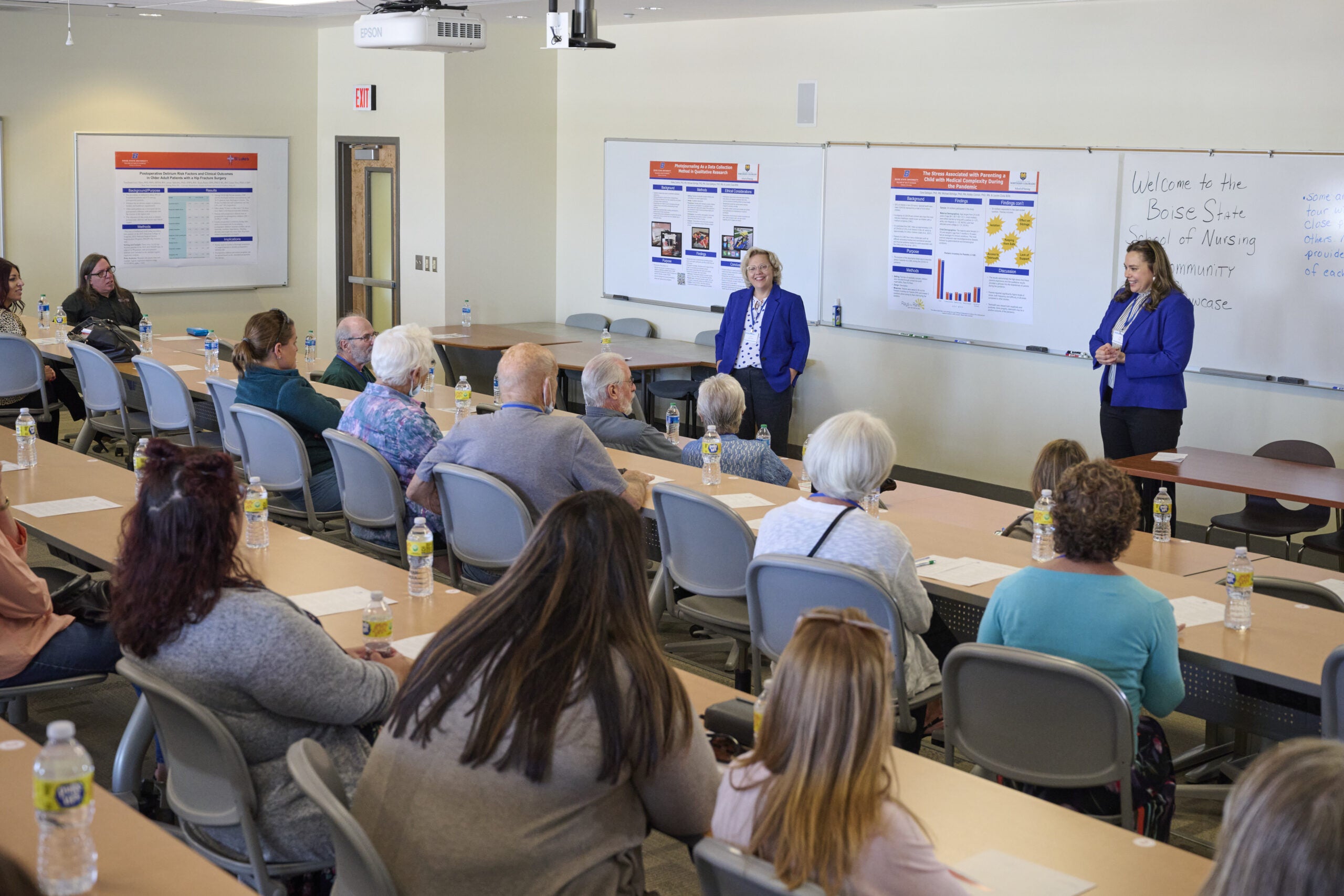
A healthy relationship between schools and community organizations is crucial for a strong workforce and a thriving community. This relationship is especially important when a community experiences extreme challenges, like the nursing shortage or a pandemic.
Divisional Dean Shelle Poole recognized the best way Boise State could find solutions to tough problems – and stay ahead of future challenges – is to work hand-in-hand with local healthcare partners.
In 2021, Poole and Associate Divisional Dean Amy Spurlock organized the school’s first Strategic Advisory Board.
Made up of leaders from seven local healthcare systems – including St. Luke’s Health System, Saint Alphonsus/Trinity Health System, LifeFlight Network, Veterans Affairs Medical Center, Primary Health Medical Group, and others – the group meets at least once a semester. They share with Poole and Spurlock updates and changes they’ve experienced recently, as well as what they anticipate needing in the future.
As a result of these conversations, Boise State innovated many aspects of its nursing education, welcoming suggestions that will equip the community with the most work-ready graduates possible.
“The School of Nursing is committed to meeting the workforce needs of Idaho, and the ability to collaborate with our healthcare partners is critical to this mission,” Spurlock said.
Poole agrees: “Our mission is only possible through ongoing conversations with innovative nurses within the health systems,” she said.
Turning suggestions into action
Discover Bronco Nurse innovations developed as a result of partnerships with local healthcare employers.
Hands On Learning Through Advanced Clinical Models
One of the school’s greatest innovations with healthcare partners is its various clinical models. Healthcare systems highlighted the need for student nurses to practice in team-based clinical models that emphasize multi-patient care, handoffs and communication.
So the School of Nursing team developed models in which students do so, practicing handing off patients to one another when they conference with their clinical instructor partway through the day instead of at the end of a traditional shift.
DEU 2.0 and 5:5
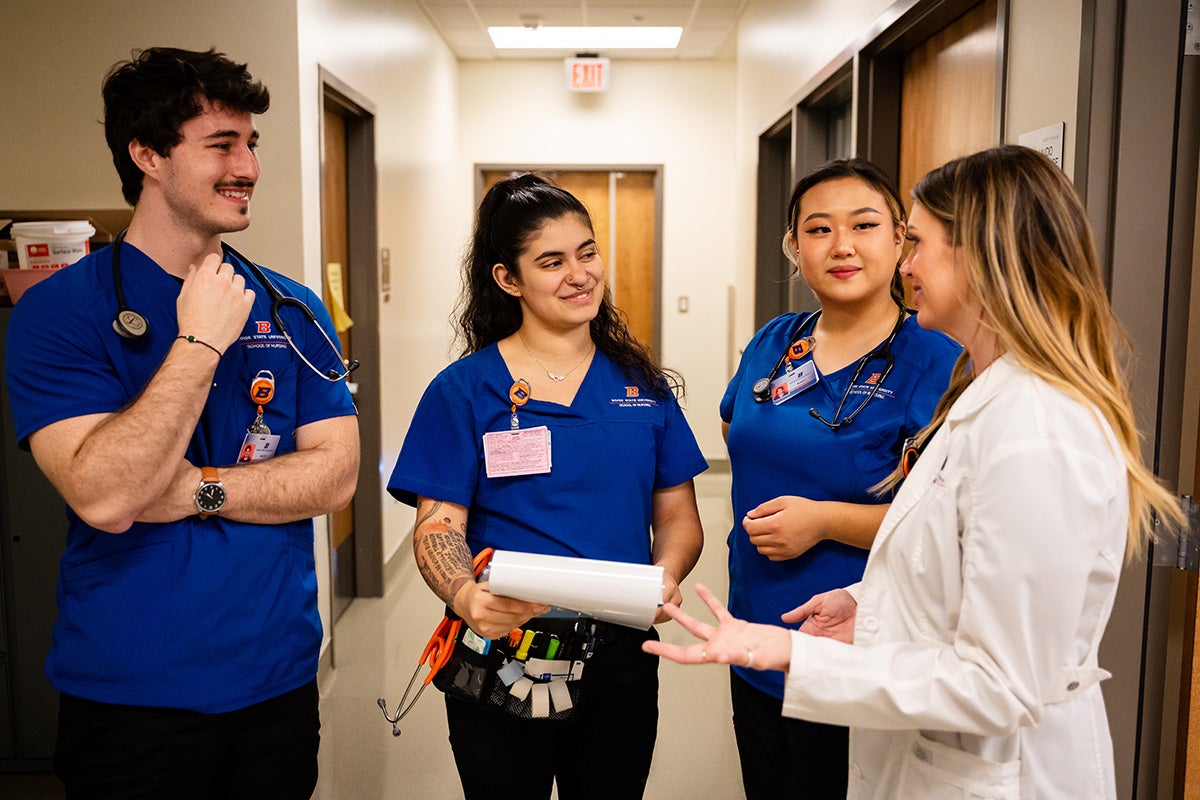
One innovative model is the DEU 2.0, developed at St. Luke’s Medical Center in Boise. Similar to a traditional “Dedicated Education Unit”, this model embeds students directly into one hospital unit instead of rotating them around various units. But this version is different because “it was created by nurses, for nurses,” said Angie Philips, director of the pre-license nursing program.
Instead of taking ten students all in one shift, the DEU 2.0 splits student groups into two shifts of five. This “5:5 split model” maximizes clinical placement space and is also used with partners at Saint Alphonsus and the Veterans Affairs Medical Center.
The school also worked with several facilities – St. Luke’s Nampa Medical Center and West Valley Medical Center, for example – to develop a model that rotates med-surg students through less typical med-surg units. It’s another win-win for students and nurses, exposing students to a variety of practice environments while increasing the facility’s capacity to host more students.
Behavioral Health Nursing
Employers also noted the need to practice in behavioral health settings. But for a variety of reasons, it’s typically difficult to place students in these kinds of clinicals. So the school brought the clinical setting to the students. Faculty developed a behavioral health module and paired it with an immersive experience that simulates a behavioral health inpatient unit.
QR Code Communication
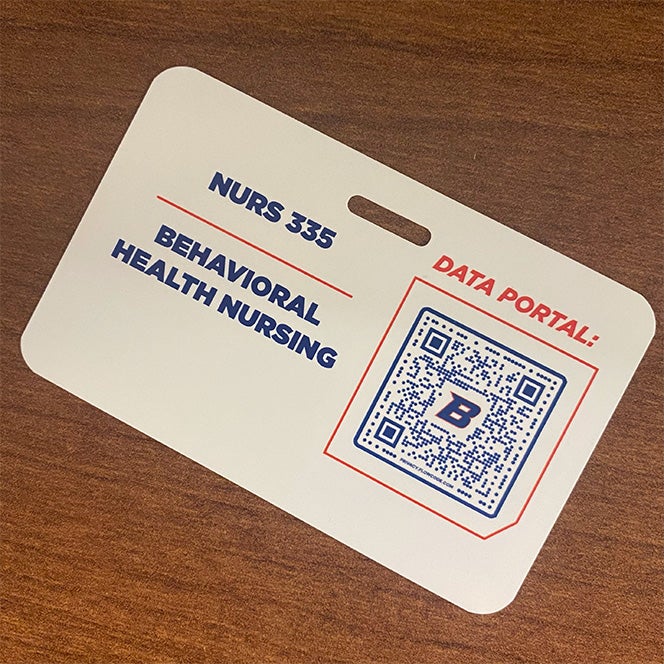
For nursing staff working with different students, employers also noted that these clinical instructors could benefit from an easy way to check a student’s competency level during clinical rotations. Thus, the QR code was born (okay, so we can’t actually take credit for this invention, but using it this way was our idea!).
The school placed QR codes on each student’s identification badge. Scanning the code brings instructors to a website that displays what each student should – and should not – be able to do at a given point in their education. It’s a simple innovation that makes the working nurse’s job easier.
Epic electronic health record
Leaders also collaborated on a way for students to learn electronic documentation before they started working as new nurse graduates. Unfamiliar technology often slows down the onboarding process, so the school partnered with St. Luke’s to develop a solution: integrating Epic – an electronic health record system – into its curriculum.
“A large part of quality medical care is documentation,” said Casey Blizzard, the simulation center operations coordinator. “Providing students with the most common medical software in the nation will give them access to a wealth of knowledge before they even graduate.”
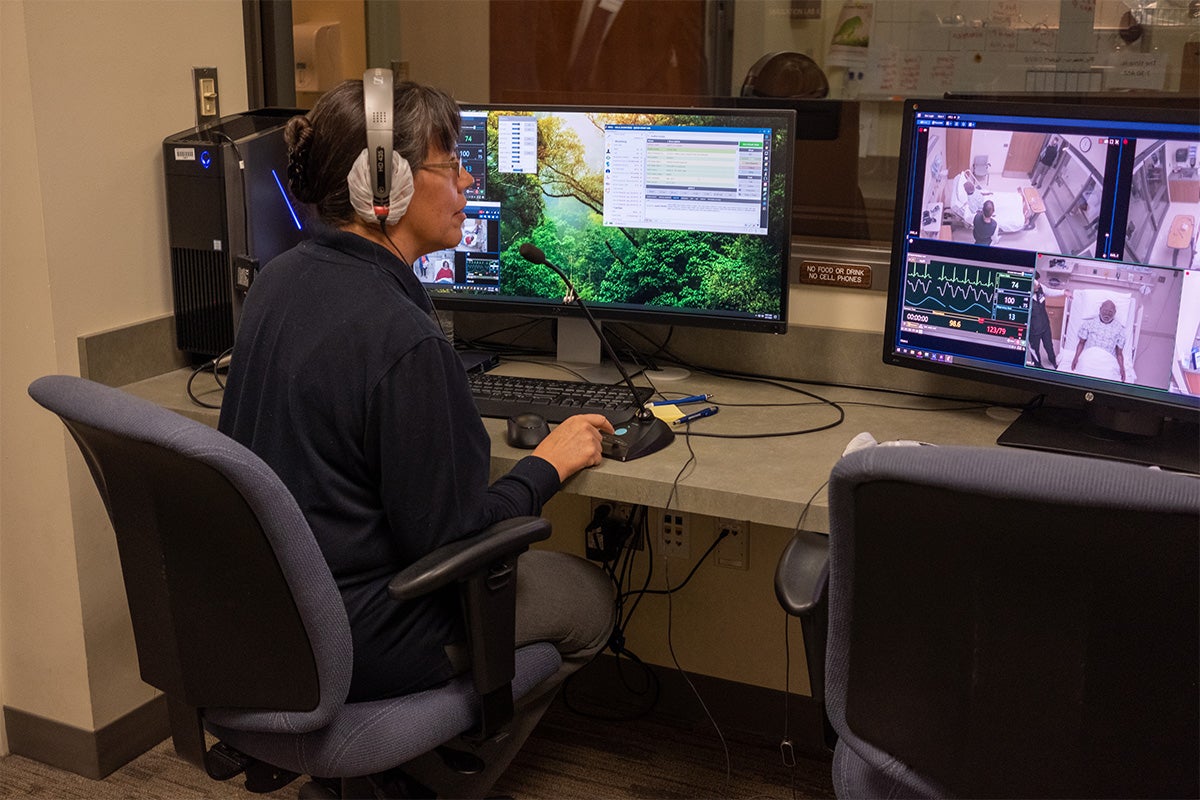
A multi-stage effort, this includes a “sandbox” version of St. Luke’s program and an introductory course for first semester nursing students. Simulation Operations Specialist Angela George developed and teaches the course.
George redesigned her original materials to be “more interesting and interactive,” she said, to avoid the computer class becoming dull. Students get hands-on practice learning to navigate elements of the program like search tools, menus and flow sheets.
“Learning what to teach and what is important is the hardest part of development,” George said, but overall, students are “curious and enthusiastic” about learning the program.
Electronic medication administration record
Another piece of electronic documentation is the medication administration records – or eMARs, for short. Nurses use eMARs at the bedside to keep track of patients’ medications, and the school wanted a way for students to practice in an environment similar to their future workplace.
Christine Larsen, a clinical instructor at the school, helped make this a reality. She developed NURSETEC, an original eMAR web program designed specifically for educational settings.
In addition, a new Healthcare Technology and Informatics class also helps students understand why their job includes such detailed electronic charting, and how the data they collect might impact a statewide or national population of patients.
This curriculum meets the needs of clinical partners – and the industry as a whole – by training students to be confident in their knowledge of hospital systems and in electronic documentation.
Employers also emphasized the increasing need for delivering telehealth and virtual care. The School of Nursing’s simulation research team focused on incorporating these elements into undergraduate nursing simulations, so students now have at least one telehealth-related scenario in every semester of the on-campus program.
Before teaching at Boise State, clinical assistant professor Jason Blomquist spent three years as a director of telehealth services at St. Luke’s Medical Center. He now brings that expertise into nursing simulations.
“We often think of telehealth as a virtual visit with your doctor over a video call, and I think that’s a very narrow scope of what it actually is these days,” Blomquist said. “We’re seeing more and more of it being used as a workforce aid for our nursing and provider groups.”
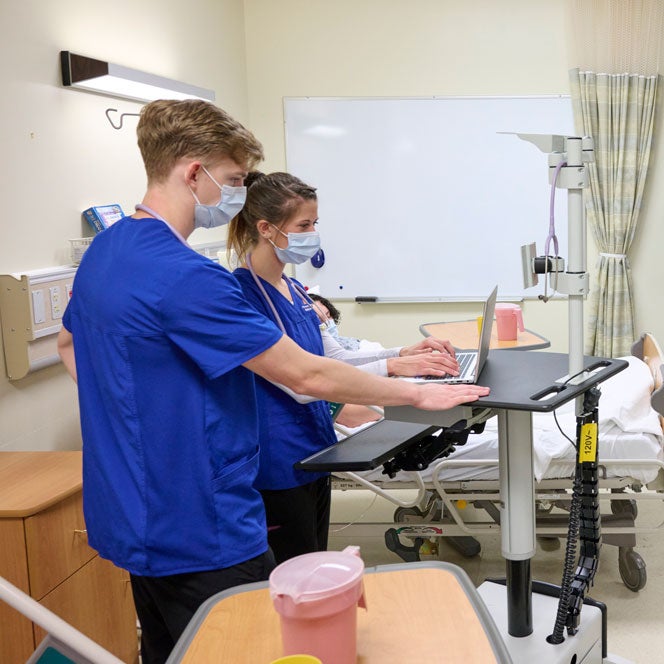
Blomquist said this might look like a virtual nurse supporting an in-person bedside nurse with tasks like admissions or rounding.
“It’s a very different style of working,” Blomquist said. “Giving [students] exposure to that so they’re ready for it when they get out into the workforce is important.”
Students also get practice with remote patient monitoring and learning to use virtual translation services. The latest scenario using this type of technology simulates an urgent care situation. Janet Lo, the standardized patient program director, translates from Cantonese to English while an standardized patient portrays a someone who doesn’t speak English.
The transition from student to full-time nurse can be a difficult one, and leaders from local healthcare organizations voiced a need for graduates to be ready to enter the workforce.
So the school’s curriculum builds students’ skills and clinical judgment, and it emphasizes concepts of professionalism like communication and workplace violence prevention.
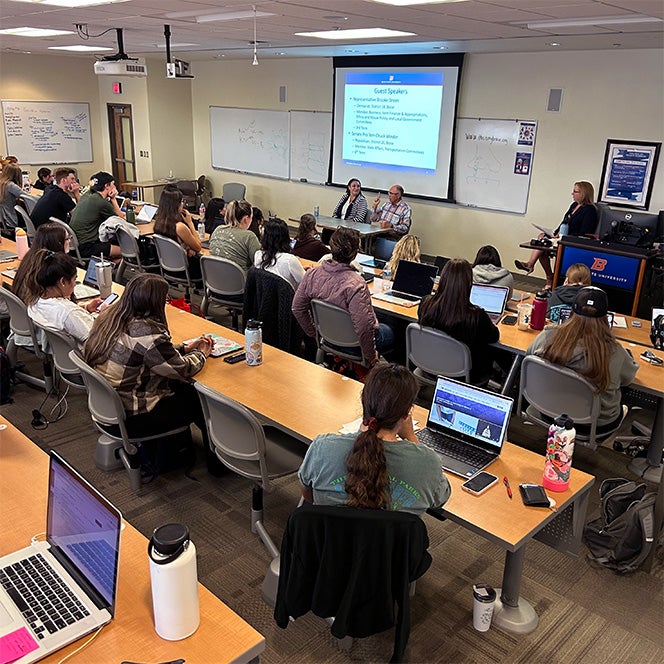
Tyler Kerns is a featured lecturer for senior students taking the “Policy, Power, and Voice” class. He’s also a licensed professional counselor and a Violence Prevention and Education Consultant with Saint Alphonsus. Kerns educates student nurses on de-escalation strategies, ways to keep themselves safe and advocating for themselves in the workplace.
“We’re having frank conversations about less pleasant aspects of patient care,” Kerns said. “I always tell them ‘Violence is something that happens in healthcare, but it’s not a part of healthcare.’”
Unfortunately, many student nurses have encountered this kind of behavior in clinicals by the time he talks with them in their final semester. Yet Kerns said many students get very engaged in the class; they offer examples from their own experiences and discuss together potential ways to apply de-escalation tactics. He is encouraged by the fortitude of new nurses he meets across the Treasure Valley.
“I’ve really been impressed by the empowerment and the ability of new nurses to speak up and say ‘That’s not okay,’” he said.
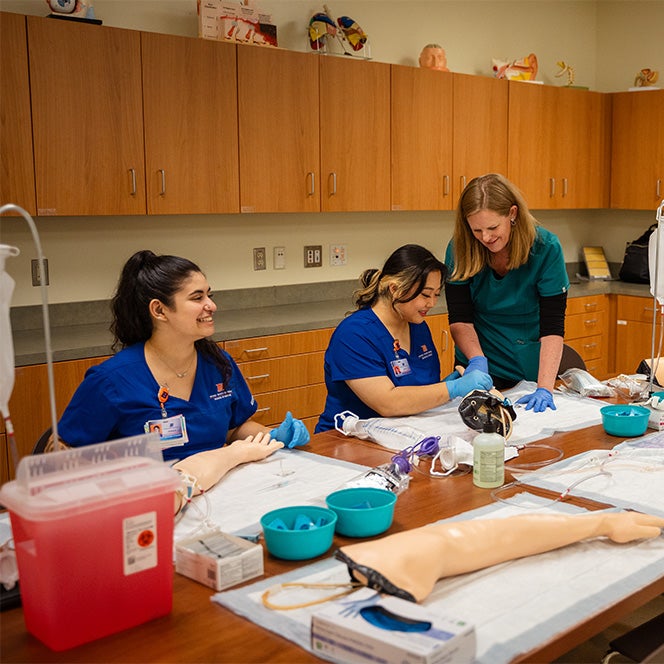
Local healthcare partners were not the first to bring it up, but they did draw the school’s attention to the provider shortage in Idaho. It’s a serious problem, and Boise State responded with serious action. The school launched new graduate degree tracks in January, adding Family Nurse Practitioner education to its offerings.
Nurse practitioners are part of the solution since they have full practice authority in Idaho They don’t require a physician’s oversight to evaluate and diagnose patients, order and interpret diagnostic tests, and prescribe treatments.
Boise State’s new tracks accelerate the time it takes bachelor’s-prepared nurses to earn their doctoral degree and nurse practitioner education, allowing highly-skilled practitioners to enter the field sooner.